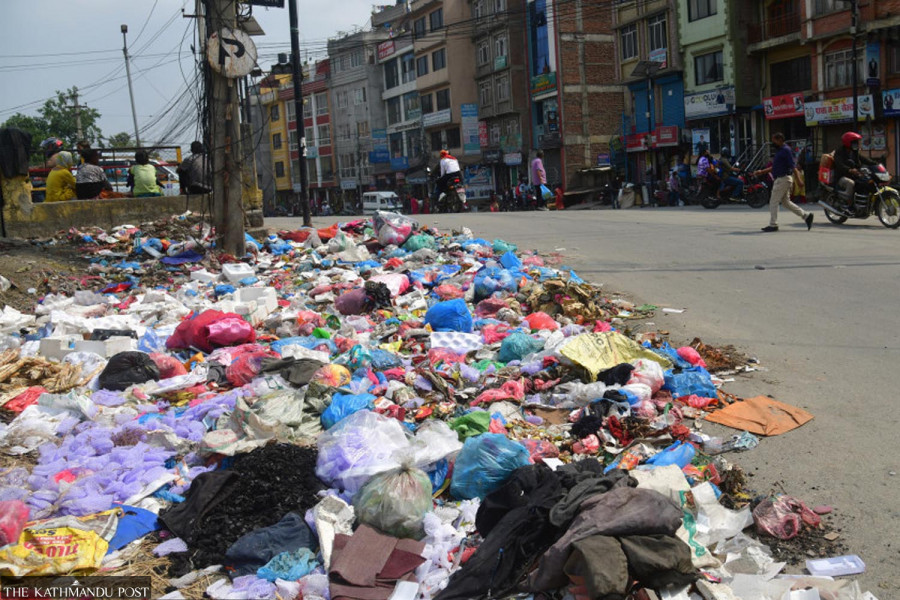Editorial
Islands of waste
Our understanding of what constitutes waste and how we manage it should change.
Social media was flooded this week with images of mounds of waste drowning in the streets of Kathmandu. Every chowk and tol in Kathmandu is full of islands of garbage emanating stench, the islands becoming taller and wider each day as Kathmandu Metropolitan City has failed to collect and dispose of the piles for weeks, citing one reason or the other. Even as Kathmandu drowns in the trash, the mayor, Balendra Shah, raised a storm on Tuesday with a barb at Maoist Centre chair Pushpa Kamal Dahal for talking big while playing second fiddle to a contractor. Having come to power with cleaning Kathmandu as one of his major agendas, the mayor has a lot to show. But it seems he is getting a taste of the corruption and conspiracy that runs through Nepal’s governance system.
Having faced criticism for his failure to manage the waste, a nervous Shah took help from the Kathmandu district administration to protect the crew ferrying waste to the landfill sites. For the past three days, police teams have not only accompanied the garbage trucks headed to Banchare Danda, but also fired tear gas at protestors and forced them to stay indoors. If enduring stench and disease for a decade and a half was not enough, locals now have to face state-sanctioned violence. They are a living example—dozens have reportedly died of cancer and other ailments due to prolonged exposure to filth—of collateral damage in keeping cities clean and city dwellers happy. A little bit of empathy on the part of the city dwellers who complain about the islands of waste in the city would help understand why the villagers are protesting waste disposal near their homes even as authorities fail to honour the dozens of agreements signed with them in the past.
But how long can state-sanctioned brutality accompany the disposal of waste? And how long will the metropolitan city be forced to deal with the problem on its own if a lasting solution is not possible with vast amounts of money and cooperation among several state units? If the municipality has failed to collect waste, it becomes incumbent upon the citizens of the city to ensure that they generate a lesser amount of household trash, at the very least for the time being, and possibly forever, so that they do not put additional burden on the environment and the already burdensome waste management system. It should not take city dwellers a crash course in rocket science to understand that the waste we produce can be segregated, and we can make a significant impact towards safeguarding the environment by producing less waste and managing it on our own to the best of our capacities.
Importantly, it is essential to remove the waste in our minds regarding what constitutes trash so that we find more creative ways of disposing of it. If it is being taken out of our homes, it is certainly not so filthy an object—especially biodegradable waste—that should be taken all the way to Banchare Danda and Sisdole sites, exposing the locals to the harmful effects of our making. But household-generated waste is only one of the aspects. Industries often create more ominous waste that needs proper disposal. The government should make industries accountable and responsible for taking back the non-degradable waste generated from their products and dispose of harmful waste, such as chemicals and glass, separately so that it does not harm humans and animals. Essentially, our understanding of what constitutes waste and how we manage it should change for a lasting solution to the waste problem.




 12.12°C Kathmandu
12.12°C Kathmandu














